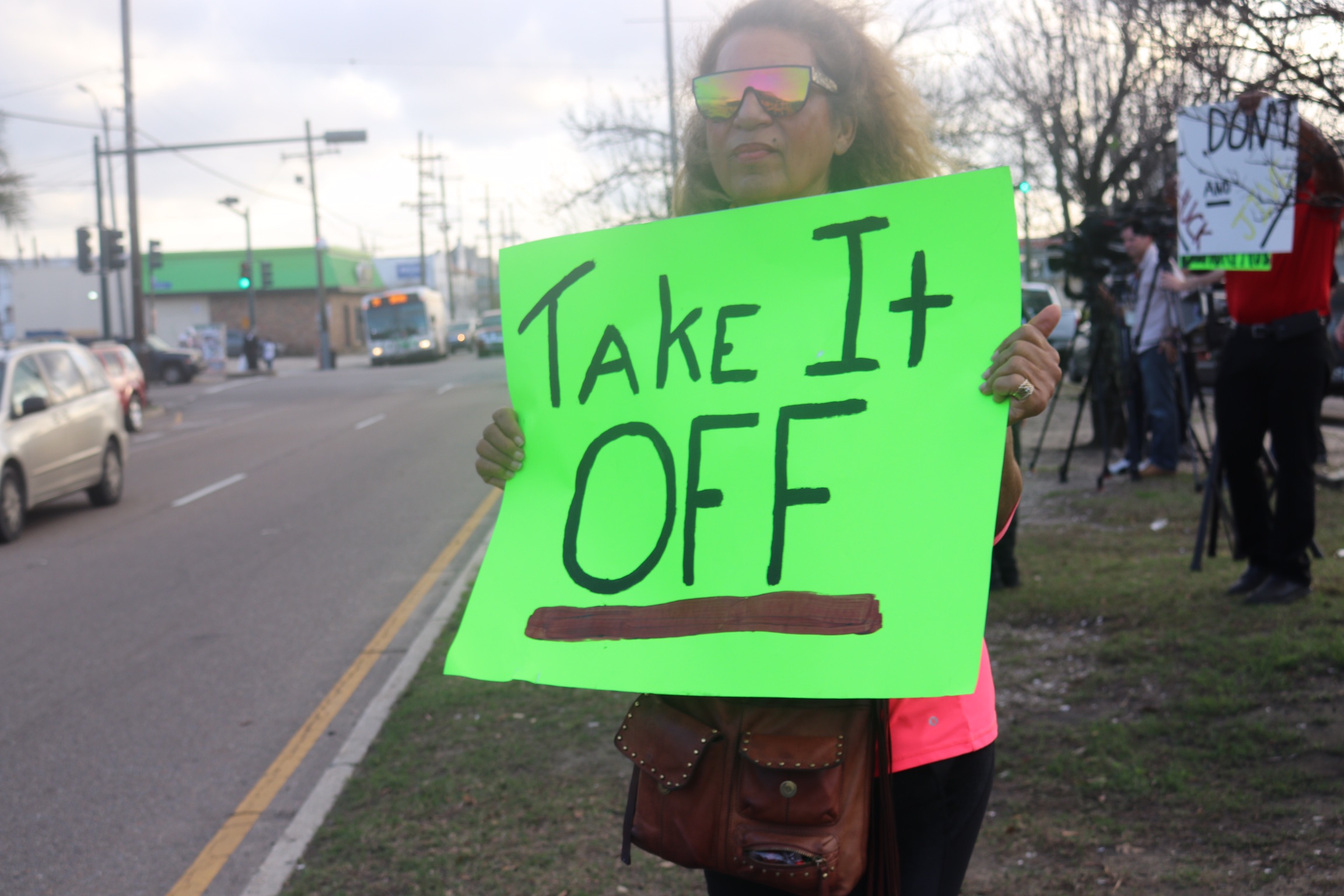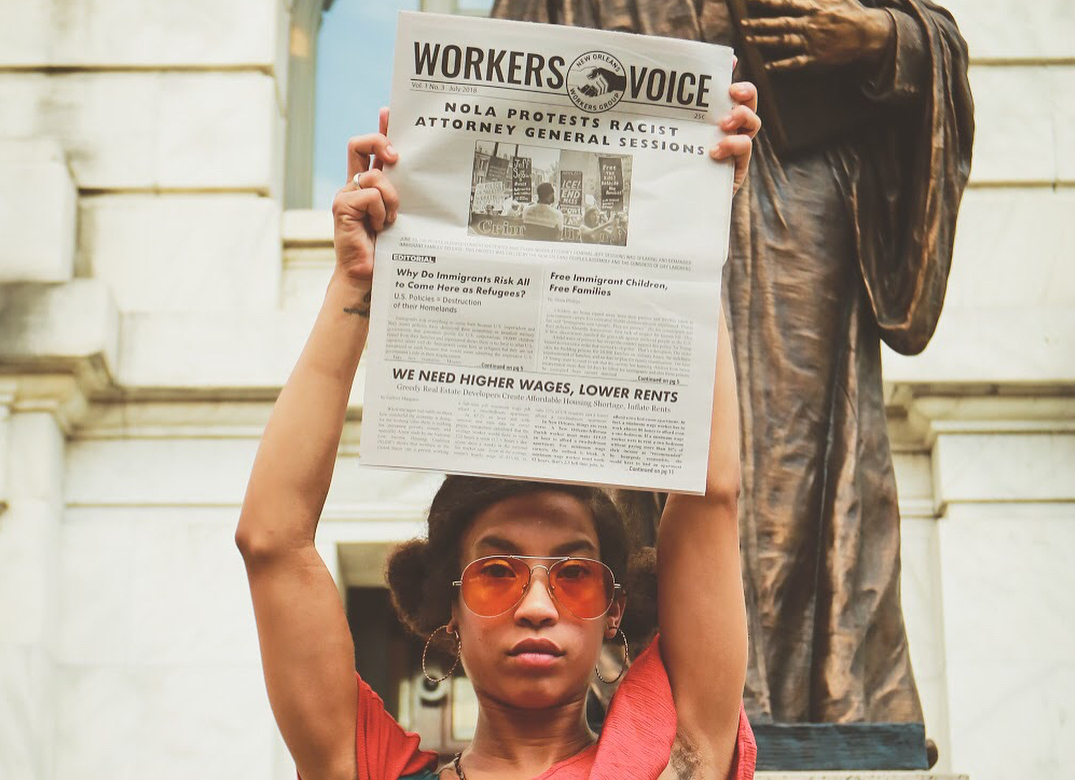
Take Em Down NOLA (TEDN) exists for the purpose of removing ALL symbols to white supremacy from the landscape of New Orleans, as a very necessary part of the struggle toward racial and economic justice. This has been our consistent stance since we began this leg of the long historical journey to remove symbols that honor, celebrate, and perpetuate white supremacy. These symbols support a white economic power structure—a SYSTEM—designed to exploit and oppress Black working class people.
TEDN has continued this work by taking a clear stance against blackface. On Thursday, February 21, during a press conference outside ZULU headquarters, we issued an appeal to their members to end this practice, which originates in the degrading caricature of Black people.
ZULU has completely lied about its Blackface tradition claiming that there is a difference between black face and black makeup. This explanation is a disrespectful dismissal of the actual history and an exploitation of those who don’t know it. ZULU also pretends that their wearing of blackface, grass skirts and tightly curled fro wigs pays tribute to the proud ZULU nation in South Africa. Actual South Africans and other people from Africa have called the practice offensive and confusing.
The sad truth is that ZULU’s use of blackface has its origins in the minstrel tradition, which was created to mock, degrade and stereotype Black people as lazy, oversexed and of low intelligence. No pride can be generated from such a white supremacist beginning.
Many have expressed confusion about our agenda or tactics since our confrontation of ZULU. Below we address some of those questions and concerns:
“TEDN is mostly comprised of transplants.”
This is false. Half of our leadership are natives to New Orleans. Two who were born elsewhere, have lived here for a collective 50 plus years, one of whom has direct family ties that go back 8 generations. Even if we were transplants, that shouldn’t matter. The legendary Civil Rights Activist Rev. Avery Alexander wasn’t born in Orleans, yet it didn’t stop him from fighting on behalf of his people. Nor did it stop the people from benefiting from his fight; holding both white and Black people accountable. Charles Deslondes was a Haitian transplant after the Haitian Revolution, and he helped lead the 1811 Enslaved People’s Revolt in New Orleans. If Black working class people around the world are to ever achieve collective liberation, we must learn to think, act and build with one another beyond the mental and physical limitations of colonial borders and parish lines. We must be as united as the white supremacist force that oppresses us.

“The issue is petty. Why does it even matter?”
Symbols reflect systems. They are a way of telling us what our roles are supposed to be in daily life in New Orleans. White supremacist monuments hover over us to tell us who’s still in charge. Blackface tells us that we are still minstrel servants of the rich white ruling class, as we entertain them joyfully. If the symbols didn’t matter, why would the rich white ruling class spend millions to build and maintain them in the first place? Why would they fight so hard to keep them up?
Think: what your oppressor proactively supports is 9 times out of 10 not good for you.
“TEDN doesn’t tend to anything but statues and symbols.”
False. TEDN is mostly comprised of black educators who have taught black students for a collective 4 to 5 decades in New Orleans. TEDN organizers actively work in support of abundant issues. TEDN organizers fight for hospitality workers’ rights, jobs for youth, education equity, protection against police terror, and the long-overdue fully-funded relocation of the Residents of Gordon Plaza off toxic soil. TEDN fights against environment racism, militarism, and the dysfunction of the Sewerage and Water Board, supporting the moratorium on water shut offs, and much more.
“Why didn’t TEDN go after Rex?”
We did. Our 2016 campaign “Racism at Mardi Gras” was a direct shot at ALL the racist symbolism reflected at Mardi Gras every year, from Rex’s KKK-like regalia to Zulu’s blackface. Also, when we took on the monuments, we were confronting the real life version of Rex. The people that put those monuments up generations ago are the ancestors of the rich white ruling class that masks as Rex every year and controls our city’s economy to this day. And it is that same class that fought so viciously to keep the monuments up.
“Why take to the streets like that?”
We wrote a letter to Zulu requesting a meeting. When no response came, we called the leadership. All was ignored, as these types of requests are by the petty bourgeois class. So we were forced to take to the streets as we always do when those in power ignore us. The history of organizing shows that only direct action will bring direct social change. Now that the global and national consciousness has risen to contend with the issue of blackface—as they should—the city of New Orleans can finally confront our own symbolic and systemic value of Black lives.
